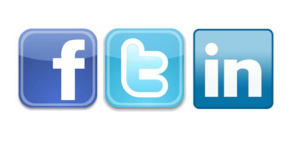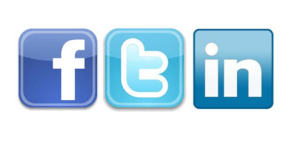
05 Sep Using Social Media to Promote Your Projects and Business
By Scott L. Gordon, Word Wizards, Inc. CEO.
Like many people in the modern era, I am fascinated by social media as a tool to increase networking and promote my business. That’s why I was drawn to WIFV’s Wednesday One meeting at Interface Media Group, featuring two powerhouse women who specialize in social media. I was delighted by what I learned and will try to relate some of it to you.
As a Partner at Beekeeper Group (http://www.beekeepergroup.com/), Shana Glickfield helps a wide array of clients with their communications and advocacy strategies, focusing on social media and online community building. She is also the founder of renowned local blog, “The DC Concierge,” which she authored from 2006 – 2010.* The name of her company, Beekeeper Group, refers to online community building or building a thriving “hive” of supporters empowered to create buzz for your issues and agenda. She is the very energetic Queen Bee of Social Media.
She urges producers as well as entrepreneurs to try to build publicity campaigns around issues of interest to others through social media. A big breakthrough in the ability to reach out to others on the web and get your company or production noticed was the ability for regular non-technical people to do a blog. It is a simple Word document so it doesn’t require you to be a web master or proficient in HTML in order to post your views and expertise far and wide.
Next, with the arrival of Twitter, the individual could in effect do a batch of “Micro Blogs” by doing several tweets per day. Since search engines look for the most active websites, daily activity on your site will cause you to attract attention from Google and the others. Using a tool called “Talk Walker” (http://www.talkwalker.com/en/social-media-analytics-search/) allows you to harness a powerful analytics tool for your brand. She encouraged us to check out that tool.
Shana stressed that many users of your products and services populate Twitter, so you have to look sharp. Be sure to update your head shot and use the same picture across social media platforms. Branding means the ability to set yourself apart from others, so use your own brand, logo, or photo on your LinkedIn or other social media homepage, and don’t forget to provide a link to your web site.
Your social media profile is your invitation to connect, so make it as attractive and elaborate as possible. Include awards, references, and major accomplishments. Even including some personal information such as hobbies is OK in order to give you a human face. People want to do business with people that they trust; interesting outside activities make you seem trustworthy. Connecting through LinkedIn before you actually go to meet someone in person is like a virtual handshake before you meet face to face. Shana says that social media is free like a puppy from the pound is free: “take it home for nothing, but it takes a lot of care and feeding.”
Amanda Miller Littlejohn is a top nationally recognized expert on personal branding. A former full-time print journalist and a writer first by training and passion, Amanda uses her unique storytelling lens and reporting skills to help her clients uncover and subsequently share better brand stories. Amanda is a motivating business coach for entrepreneurs and experts who are seeking brand clarity and fresh ideas on how to emerge as experts in their chosen fields.*
Amanda says to think of social media networking as an opportunity rather than a chore. You can be very smart, but social media is a way to let other people know it. In order to brand yourself on social media think of “peak moments and gratitudes”. Tell others about peak moments which were times that you were operating at the peak of your effectiveness. Gratitudes are the special services and situations that your clients are consistently grateful for. Talk about these items on social media and others will be attracted to you.
LinkedIn Groups are a great way to position yourself online as an expert on something. List your specialties in clear and concise messages. Support your expertise with evidence of good work—in other words, case studies of previous accomplishments. Back up your case studies with social proof, i.e. recommendations. Include written evidence of problem solving, such as blogs, reports, and books that you have written.
Amanda ended her discussion by showing her famous “Branding Box,” a beautifully designed toolkit and resource that combines her best brand lessons, tactics, tools, and inspiration to help you quickly build your brand. It covers business development, pitching the media, social media strategy, and more. If you are looking to build your brand, pursue your passions, and package your genius for profit, this is the resource that ties it all together. (See http://www.amandamillerlittlejohn.com/box/.)
The meeting was moderated by Al Kalman, Director of Digital Engagement Strategy at Interface Media Group (IMG). Al has nearly 20 years of experience in online and mobile social media, gaming, interactive television, and marketing.* He handles all sorts of social media and interactive issues for IMG, including digital strategy and digital interactive production.
*Bios and photos of speakers provided by WIFV.







